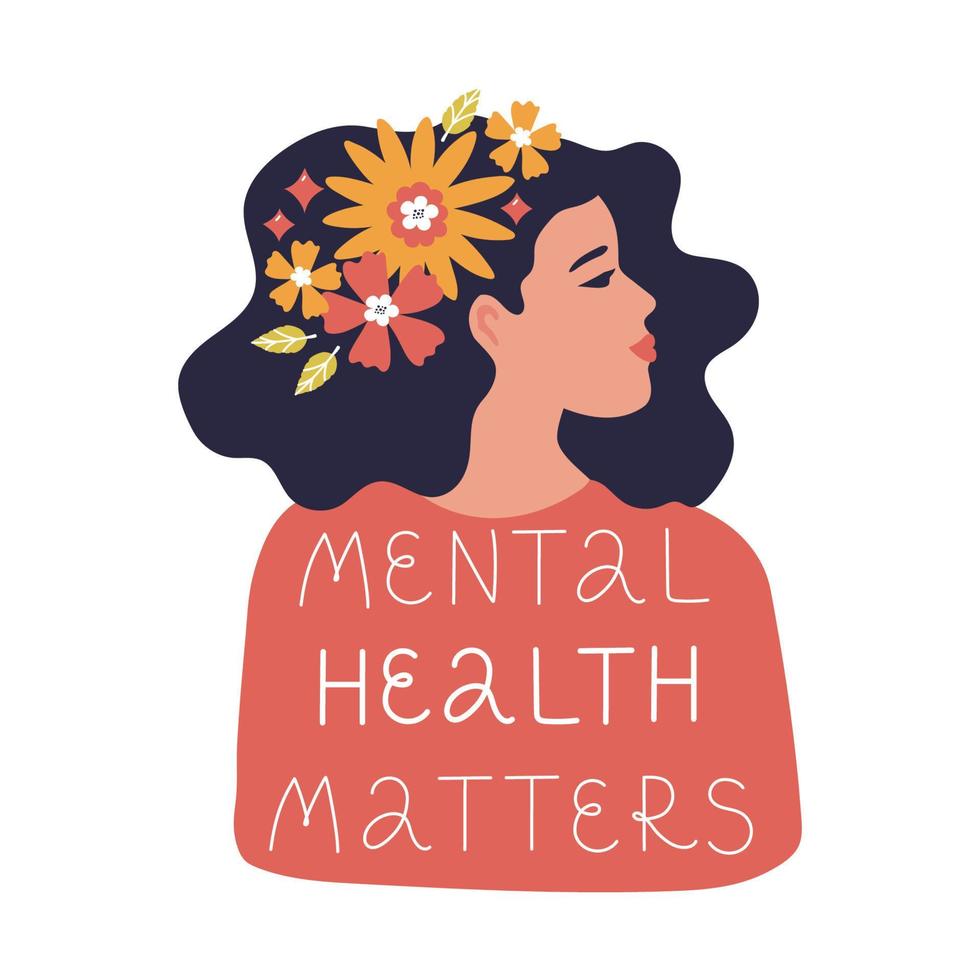October Wellness Spotlight
Mental Health Awareness Week is October 3-9th!
According to the CDC, mental health includes our emotional, psychological, and social well-being. It can affect how we think, feel and act. Mental Wellbeing can impact your overall health and it can change over time. Mental illnesses are among the most common health conditions in the United States. The National Alliance of Mental Illness notes that more than 1 in 5 adults experience a mental illness. Mental Health Awareness Week is put into place to increase the understanding of mental health illnesses and reduce the stigma, along with helping those who are suffering seek help. In this month’s wellness spotlight, learn about mental health conditions, what to watch for, and when to reach out for help.
Mental Health Conditions
Anxiety Disorders
- Generalized Anxiety Disorder
- Persistent feeling of anxiety or dread, which can interfere with daily life.
- Symptoms include:
- feeling restless, easily fatigued, difficulty concentrating, being irritable, difficulty controlling feelings of worry, difficulties falling and staying asleep
- Symptoms include:
- Persistent feeling of anxiety or dread, which can interfere with daily life.
- Panic Disorder
- People with panic disorder have frequent and unexpected panic attacks
- Panic attacks are sudden periods of intense fear, discomfort, or the feeling of losing control when there is no danger
- Symptoms include:
- Pounding or racing heart, sweating, trembling, chest pain, out of control feelings
- Symptoms include:
- Social Anxiety Disorder
- Intense Fear or anxiety during social situations
- This fear can get in the way of going to work, school, and doing daily life activities
- Symptoms include:
- Sweating, racing heart, stomachaches, difficulty making eye contact
- Symptoms include:
- Learn More about Anxiety Here
Depression
- A common but serious mood disorder
- It affects how a person feels, thinks, and approaches their daily life activities
- Can develop at any age, but commonly 20-30s
- Major Depression includes symptoms of feeling down, or loss of interested for at least two weeks
- Persistent Depressive disorder consists of less severe symptoms of depression that last for at least two years
- Perinatal Depression is depression that occurs during or after pregnancy
- Seasonal Affective disorder is depressions that comes and goes with seasons, which usually lasts from late fall to spring
- Learn more about Depression Here
Bipolar Disorder
- A mental illness that causes unusual shifts in a person’s mood, energy, activity levels, and concentration
- It can make it difficult to do day-to-day tasks
- Often diagnosed during late adolescence or early adulthood
- It can cause people to experience a manic or depressive episode
- A manic episode can look like feeling very jumpy, racing thoughts, feeling able to do things without getting tired, feeling unusually powerful or talented
- A depressive episode can look like feeling sad, having trouble falling asleep, talking very slowly, lack of interest in most activities
- Learn more about Bipolar Disorder Here
Post-Traumatic Stress Disorder (PTSD)
- A disorder that develops in some people who encounter a scary or dangerous event
- People with PTSD may feel stressed even when they are not in danger
- PTSD can develop at any age, but commonly within 3 months of the traumatic event
- Symptoms include being easily startled, feeling tense, staying away from certain places or events that are reminders of traumatic events
- Learn more about PTSD Here
Eating Disorders
- Anorexia Nervosa
- A condition where people avoid food, severely restrict food, or eat only small quantities of certain foods
- Symptoms include extremely restricted eating, extreme thinness, intense fear of gaining weight
- Most common in younger girls and women, but can affect anyone
- Bulimia Nervosa
- A condition where people have recurrent and frequent episodes of eating large amount of food and feeling out of control
- Commonly followed by forced vomiting, fasting, or excessive exercise
- Symptoms include decaying teeth as a result of exposure to stomach acid, severe dehydration, electrolyte imbalance
- Binge Eating Disorder
- A condition where people lose control over their eating and have episodes of eating large amounts of food
- Commonly not followed by purging, excessive exercise or fasting, which usually results in weight gain
- Symptoms include eating unusually large amounts of food in a short amount of time, eating when you are full, eating in secret, or feeling guilty about your eating
- Learn more about Eating Disorders Here
When to see a doctor
If you are experiencing one or more of the symptoms above, it could be beneficial to consult a doctor. A doctor can assess and diagnose a mental illness. From here, they can recommend therapy, medication, or self help remedies. When people seek help, it can often ease symptoms and help you feel better by talking about it.
Helping a loved one
If someone you love is showing signs of a mental illness, have a discussion with them voicing your concerns. You can have an open conversation with them, and help them find a qualified mental health professional. The hardest part for someone can be making an appointment, so your help with that can help exponentially. It can even help to go to the appointment with them for support. If they are not interested in receiving professional care, you can still offer support and encouragement by having a conversation. To initiate a conversation, it can be helpful to ask how they are feeling, or use your own experiences as a conversation starting point.
Resources:


